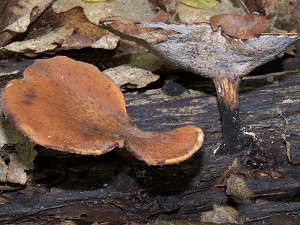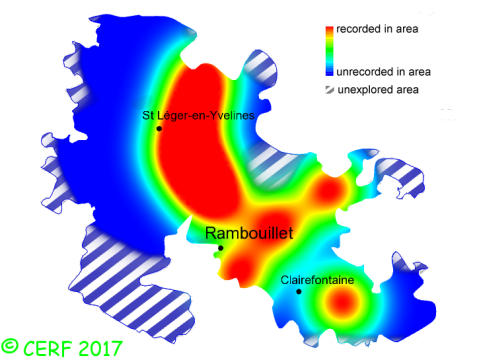| Polyporus leptocephalus (Jacq.) Fr. |
|
|
|
|
|
|
The cap is ocre-yellow to buff then orange-brown to tobacco-brown, thin, convex then funnel-shaped or irregular. The cap surface is smooth, shiny or matt, sometimes with brown radial streaks. The cap margin is wavy, thin and acute, often lobed, wrinkled. The stem is central or more often off-centre, smooth and matt, cream to brown, but with a clearly marked, distinctive brownish-black base. The flesh is white then cream, tough, thin; its taste is mild; the odour is faint, mushroomy; The tubes are decurrent, short (less than an inch), white at first, then cream. The pores are white then ochre-brown, very narrow (4 to 7 per mm), round to angular. The spore print is white. It grows in deciduous woods, on twigs, dead branches, sometimes trunk bases or stumps of beech or alder. The fruiting period takes place all year long.
Distinctive features : ochre cap, smooth and funnel-shaped; creamy-brown stem, but with a differentiated dark brown to black base; white pores, very close; on dead broad-leaved branches Polyporus leptocephalus is infrequent and scattered in the forest of Rambouillet, and is frequent, more generally speaking . | ||
|
page updated on 14/01/18

